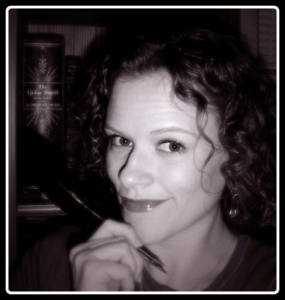
Courtney Cantrell's weekly writing advice.
This week, my dearest inklings, I find myself seventy-four pages into Sue Monk Kidd’s The Secret Life of Bees and enjoying it beyond words. But since the point of this article is to share with you–in words, no less–what I am learning from what I am reading, I give you here my attempt to coalesce my swirling and delighted impressions into something not only legible but also helpful to you.
More Than Academia
I don’t want to tell you too much about the story, because this novel is getting a high READ THIS! recommendation from me, and I want you to read it for yourselves. If you pick up a copy at the bookstore, the blurb on the back describes a tale set in a predominantly racist South Carolina of 1964. The protagonists are fourteen-year-old Lily, who is white, and housekeeper Rosaleen, who is black. Together, they’re on the run from the prejudiced law and on the hunt for the secret behind the death of Lily’s mother.
 The depth and breadth of racism depicted in this novel boggle my mind; but I don’t wish to digress into a diatribe about politics and history. Instead, I am thinking about words that conjure images in the reader’s mind. I am thinking about phrases that kindle feelings in the reader’s heart. I am thinking about lyrical language that transports the reader into a realm at the furthest remove from the mundane. There are ways of saying things, and then there are ways of saying things. Kidd’s writing reminds me of the latter. Her prose is neither flowery nor frilly–but it is full. She uses fresh verbs instead of clichés. She doesn’t name the feelings of her characters; she communicates emotions through sensory images. The metaphor and the simile are her close companions, but she allows the reader to know them gradually.
The depth and breadth of racism depicted in this novel boggle my mind; but I don’t wish to digress into a diatribe about politics and history. Instead, I am thinking about words that conjure images in the reader’s mind. I am thinking about phrases that kindle feelings in the reader’s heart. I am thinking about lyrical language that transports the reader into a realm at the furthest remove from the mundane. There are ways of saying things, and then there are ways of saying things. Kidd’s writing reminds me of the latter. Her prose is neither flowery nor frilly–but it is full. She uses fresh verbs instead of clichés. She doesn’t name the feelings of her characters; she communicates emotions through sensory images. The metaphor and the simile are her close companions, but she allows the reader to know them gradually.
Put In Some Poetry
Most of us have heard the writing advice: simplify, simplify, simplify. Sound advice, to be sure…but so easy to misapply. When I try to simplify my own writing, I must guard against slipping into simplistic, lest my prose degenerate into SVO, SVO, SVO, ad infinitum. Kidd reminds me that I can craft something beautiful without compressing it into spare and dull. I can also adorn my writing with poetic language that doesn’t turn my prose into something so ornate it’s vulgar. Have I stumbled upon a paradox here, one that is true because of its self-contradictory nature? Perhaps. At the very least, I’m coming closer to making sense out of the vivid concoction of word and color which Kidd’s novel is stirring in my mind.
What I am certain of is this: Kidd hems her prose with poetry, and her appliqué is never too flashy for simple company. Here are a few examples from The Secret Life of Bees that illustrate what I mean:
The main character, Lily, does not tell the reader that she feels reverent. Instead, she says, “Silence…hovered over my head, beauty multiplying in the air, the trees so transparent I felt I could see through to something pure inside them.”
A woman’s face is “corrugated with a thousand caramel wrinkles.”
This is one of my favorite phrases so far: “a torture chamber of food staples.”
Lily isn’t simply bored. Boredom “poisons” her.
The sky “puckers” with light.
To describe anger, Kidd writes, “…the air turned raw and full of welts.”
I could provide you with samples from each of the seventy-four pages I have read so far–but I would be robbing you of the pleasure of your own literary discoveries, as well as edging into the dangerous territory of copyright infringement. So, Gentle Readers, my recommendation stands. Get your hands on copies of The Secret Life of Bees and see if the poetry in Kidd’s prose inspires you to simplify yet beautify your own writing. I know it’s making my fingers itch to start editing a certain first draft I recently finished… (What? Is that a Work-In-Progress Update I see?)
And that’s WILAWritWe!
(Help fund the college tuition of my future children! Click a link above and buy something from Amazon!)
Photo credit Courtney Cantrell.





